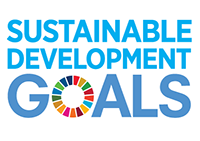Core Housing Need
Definition:
Percentage of units not meeting the three criteria (suitability, affordability and adequacy) for housing
Methods and Limitations:
Statistics Canada, in collaboration with the Canada Mortgage and Housing Corporation (CMHC), has produced the CMHC’s core housing need indicator since 1991.
A household is said to be in ‘core housing need’ if its housing falls below at least one of the adequacy, affordability or suitability standards and it would have to spend 30% or more of its total before-tax income to pay the median rent of alternative local housing that is acceptable (meets all three housing standards).
Housing standards are defined as follow:
Adequate housing is reported by their residents as not requiring any major repairs.
Affordable housing has shelter costs equal to less than 30% of total before-tax household income.
Suitable housing has enough bedrooms for the size and composition of resident households according to National Occupancy Standard (NOS) requirements.
Assessing whether a household is in core housing need thus involves two steps:
- Determining whether or not the household lives in acceptable housing; and
- If the household does not live in acceptable housing, determining whether it’s before-tax income is sufficient to access acceptable local housing.
If a household not living in acceptable housing can access acceptable local housing for less than 30% of its before-tax income, it is not in core housing need; it is in core housing need only if acceptable local housing would cost 30% or more of its before-tax income. In communities where market rents can be estimated, the cost of acceptable housing is calculated using the median rent of rental units with the number of bedrooms the household requires. Elsewhere, the cost of acceptable housing is based on the estimated monthly carrying cost of a newly constructed home with the number of bedrooms the household requires.
Only private, non-farm, non-band, non-reserve households with incomes greater than zero and shelter-cost-to-income ratios (STIRs) less than 100% are assessed for core housing need. Farms are excluded because shelter costs for farm households are not separable from costs related to other farm structures. Band households are excluded because shelter costs are not collected for households whose housing costs are paid through band housing arrangements. For the purpose of measuring affordability, CMHC regards STIRs of 100% or more, STIRs for households with incomes of zero or less, and STIRs of households living in non-band housing on reserves1 as uninterpretable.
To access CMHC Housing Market Information Portal data:
To access data:
- Select ‘Full View’ in the Housing Market Information Portal
- Select ‘Core Housing Need’
- Select ‘Household Type’
- Under ‘display options; select ‘Historical Time Periods’
- Use ‘Total’ column number
Sources:
Statistics Canada. 2022. (table). Census Profile. 2021 Census of Population. Statistics Canada Catalogue no. 98-316-X2021001. Ottawa. Released September 21, 2022.
Canada Housing and Mortgage Corporation. 2021. Housing Market Information Portal.

 Core Housing Need in the Sustainable Development Goals
Core Housing Need in the Sustainable Development Goals
Click on the SDG to reveal more information
11. Make cities inclusive, safe, resilient and sustainable
Cities are hubs for ideas, commerce, culture, science, productivity, social development and much more. At their best, cities have enabled people to advance socially and economically.
However, many challenges exist to maintaining cities in a way that continues to create jobs and prosperity while not straining land and resources. Common urban challenges include congestion, lack of funds to provide basic services, a shortage of adequate housing and declining infrastructure.
The challenges cities face can be overcome in ways that allow them to continue to thrive and grow, while improving resource use and reducing pollution and poverty. The future we want includes cities of opportunities for all, with access to basic services, energy, housing, transportation and more.
Related Core Housing Need Targets
By 2030, ensure access for all to adequate, safe and affordable housing and basic services and upgrade slums

